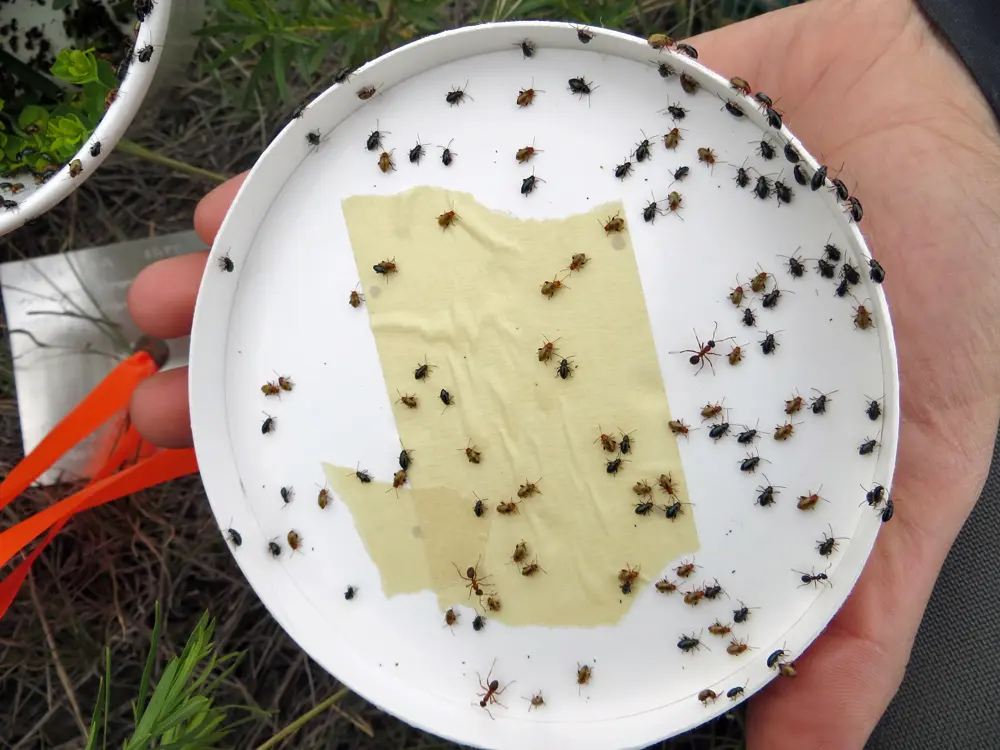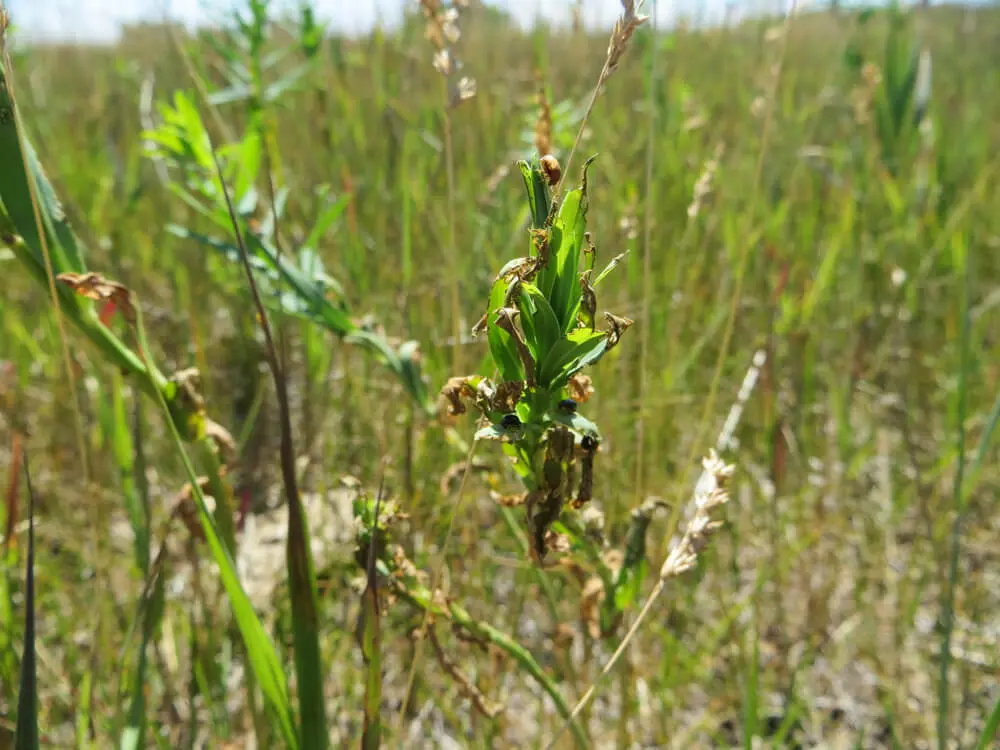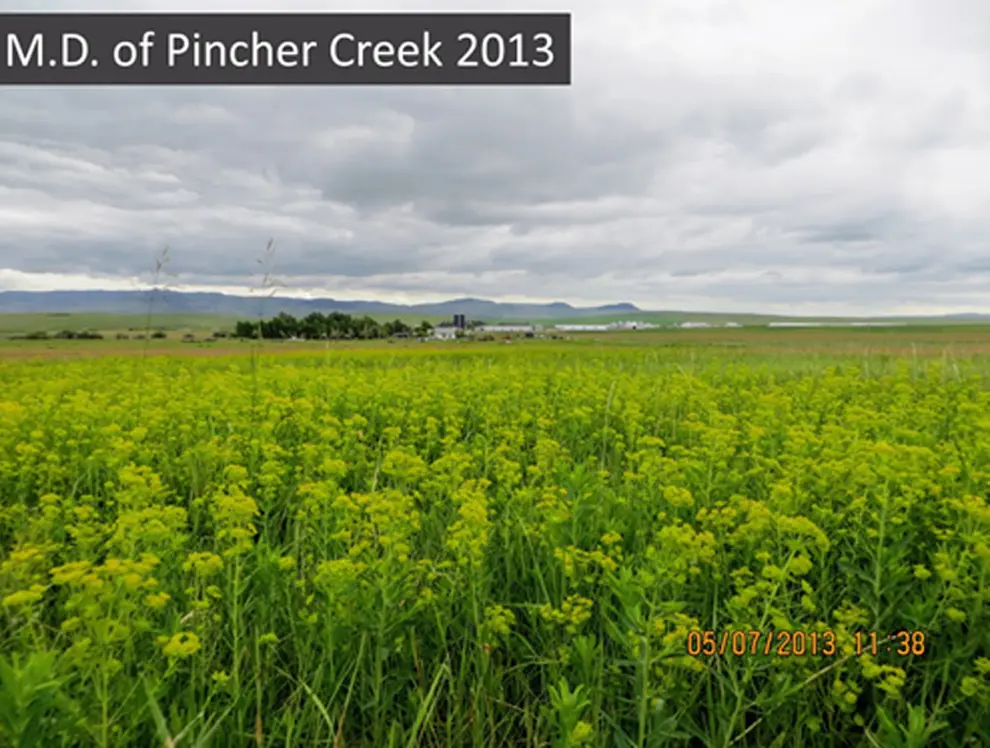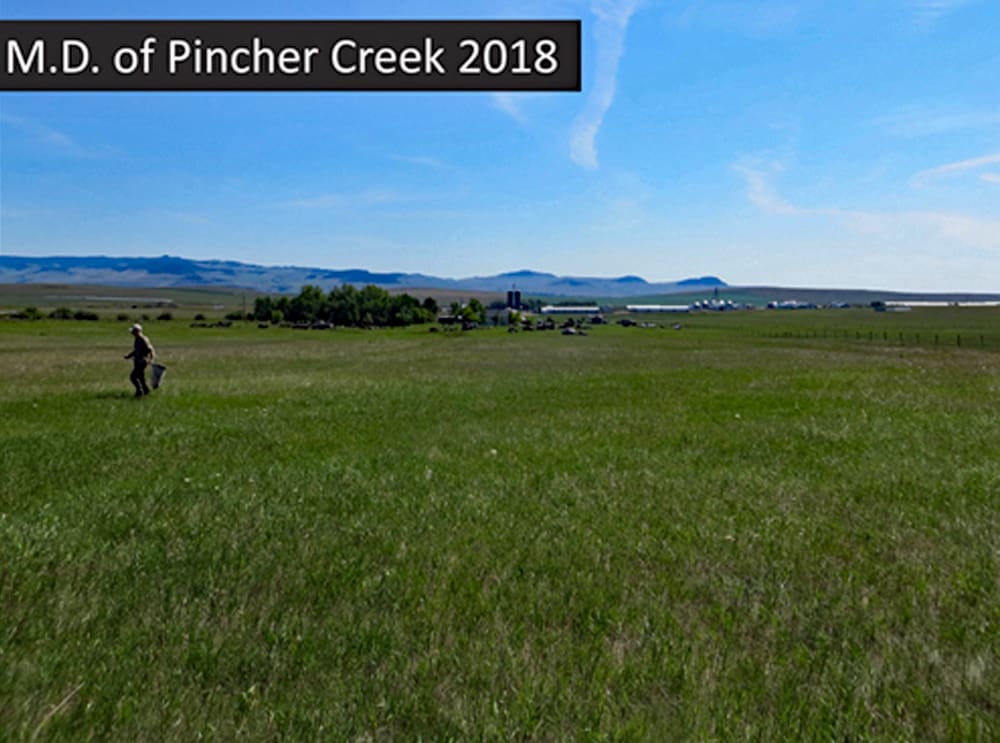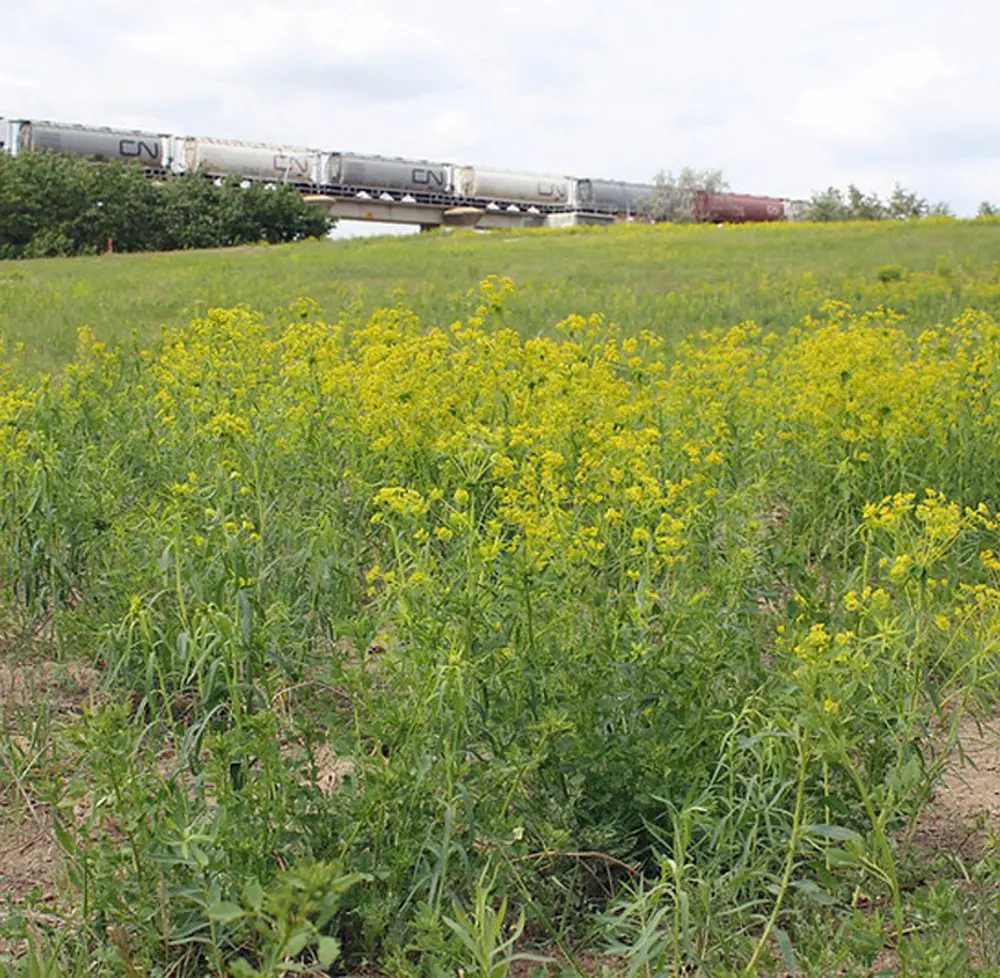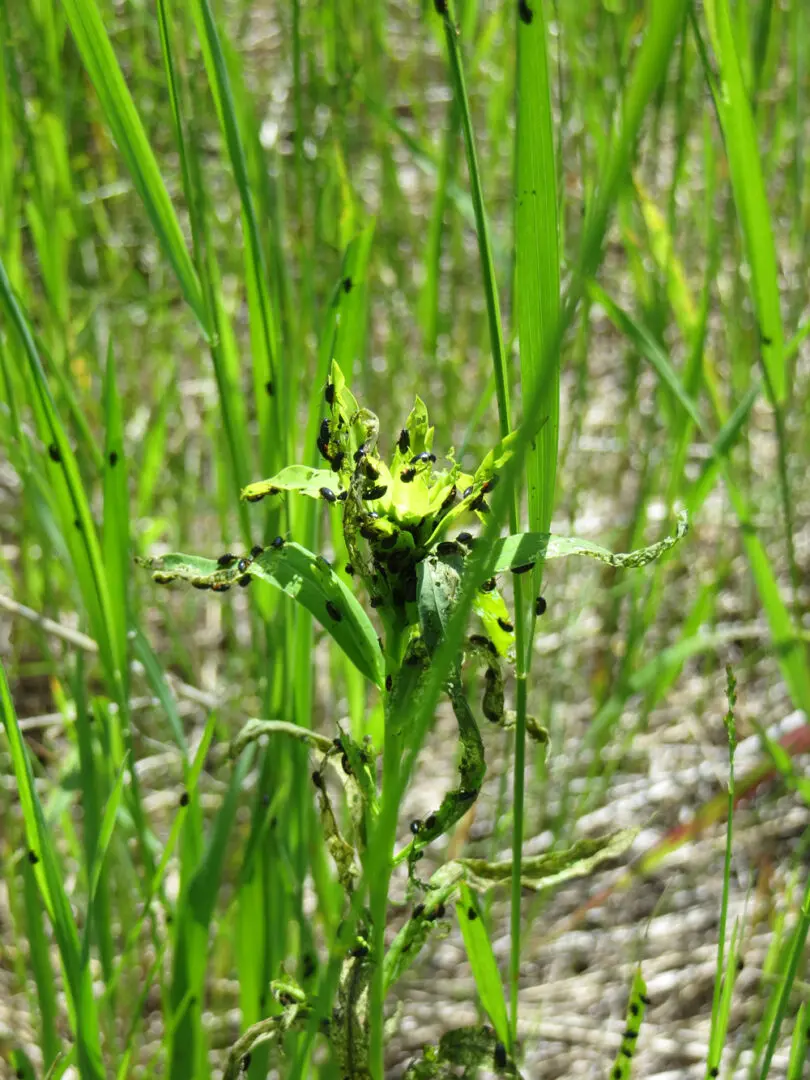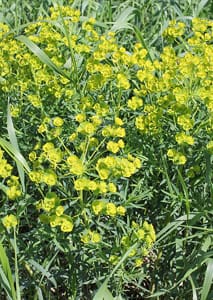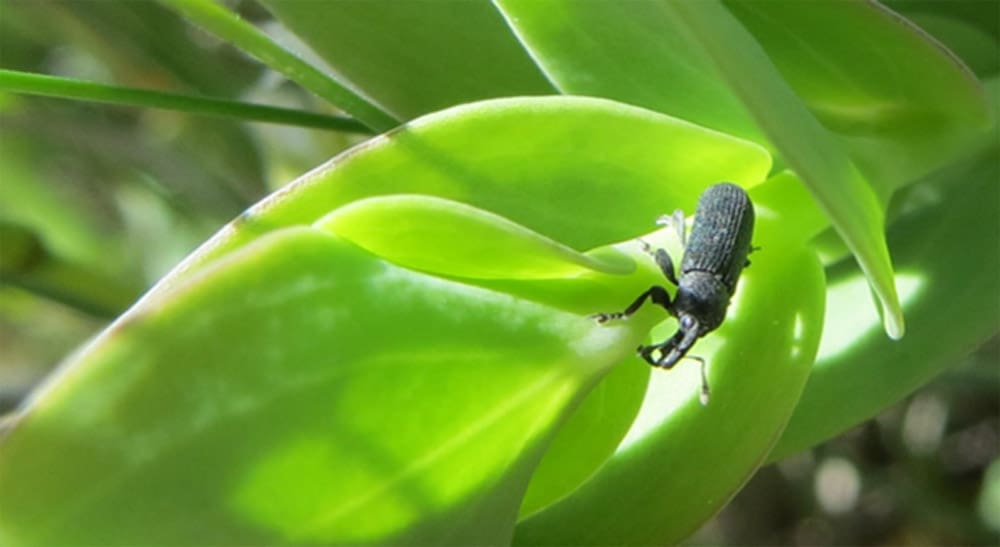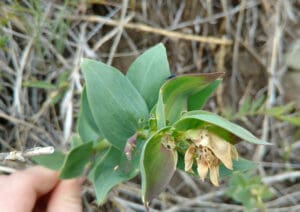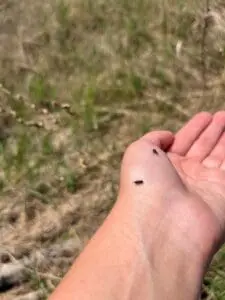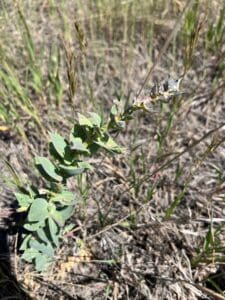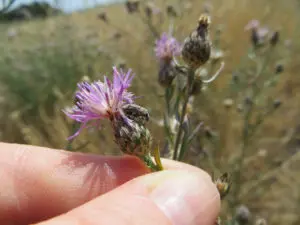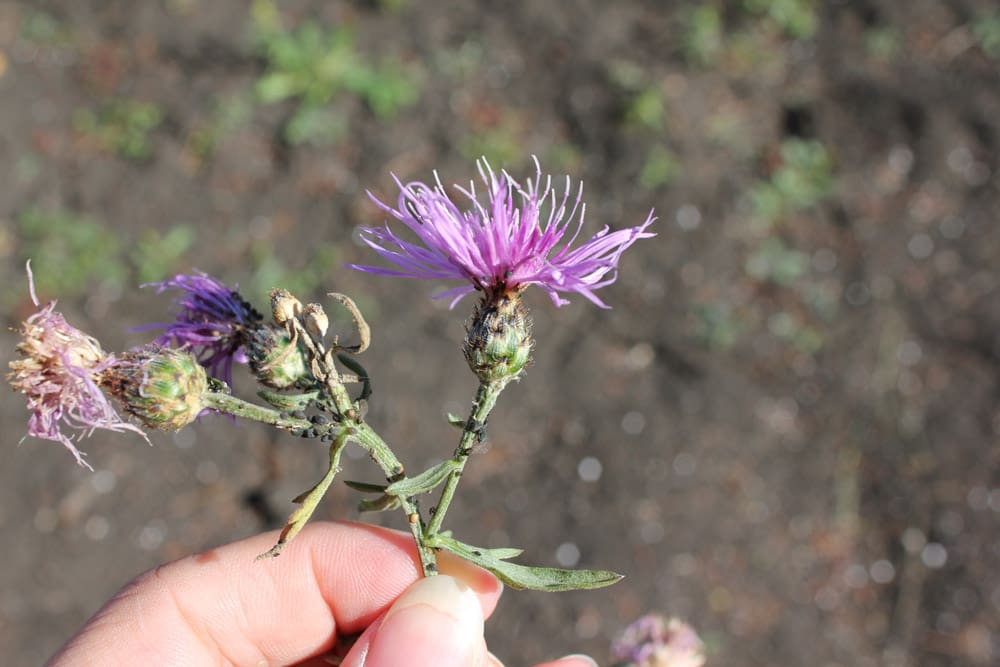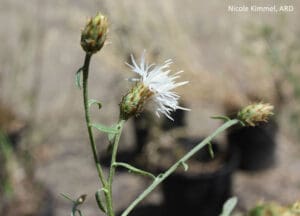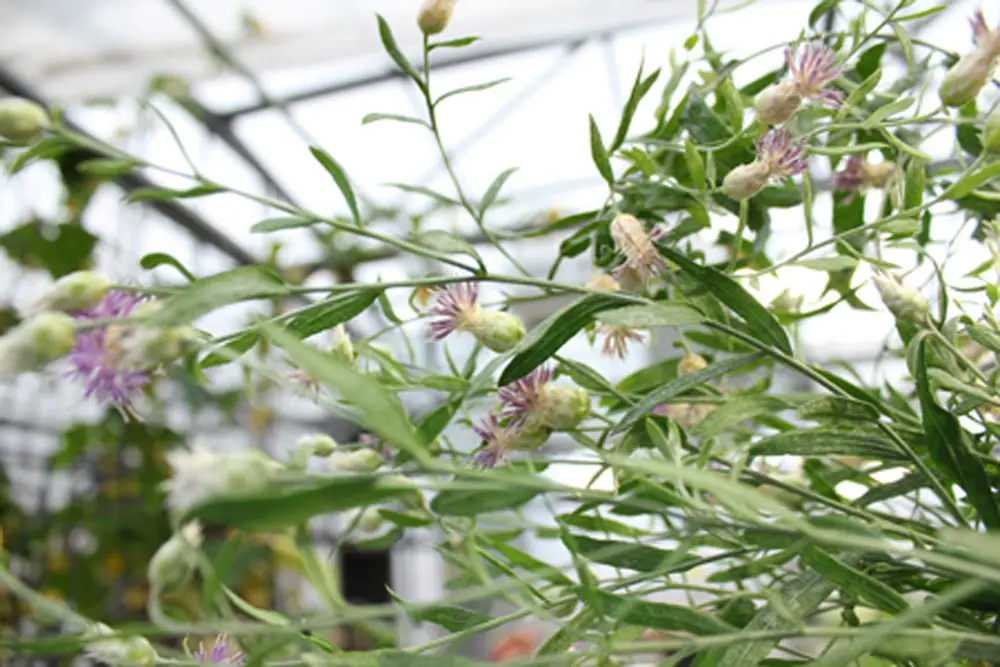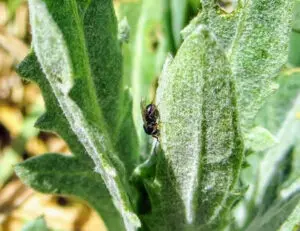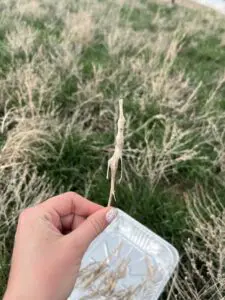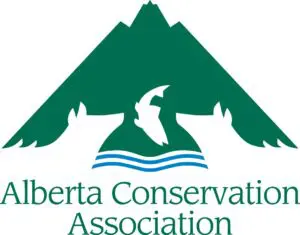AISC Biocontrol Release Program for Invasive Plants
What is Biocontrol?
Biological control or biocontrol is the suppression of populations of pests using living organisms. Since 2016, the Alberta Invasive Species Council (AISC) has been the project coordinator for a biocontrol release program using host-specific insects for invasive plants in Alberta. The program reintroduces proven specialist insects to invasive plants from countries where they originated, weakening the competitive advantage these plants gain from escaping their natural predators in their invaded range. Biocontrol agents are self-sustaining and require little input after they are released, making them a valuable tool in integrated pest management programs.
Background
The Alberta biocontrol release program started in 2001 as a collaboration between the weed biocontrol research team at Agriculture and AgriFood Canada (AAFC) and seven Agricultural Fieldmen in southern Alberta. Drawing on over 50 years of research screening and establishing specialist biocontrol agents for invasive plants, the initial invasive plant targeted was leafy surge— an invasive species from Europe that crowds out native species and produces a sap that is toxic to cattle. Since 2001, the program has expanded to include additional targets, such as houndstongue, Dalmatian toadflax, and knapweeds, and has continued to build on AAFC research into new biocontrol agents.
With ongoing support from stakeholders, coordination by AISC and research expertise from AAFC, the program has grown from the initial group to collaborate with over 39 different organizations throughout Alberta. Together this partnership has now released and monitored biocontrol agents at over 1,500 locations. Monitoring data collected by the program is reported back to AAFC to improve the implementation of future biocontrol agents.
The program is entirely funded by participants and is operated by AISC as a service for invasive plant managers and landowners to purchase biocontrol agents along with expert consulting on their use.
The program currently offers biocontrol agents for the following invasive plants for 2025:
- Leafy spurge (Euphorbia esula)
- Dalmatian toadflax (Linaria dalmatica)
- Spotted and diffuse knapweed (Centaurea maculosa and C. diffusa)
- Russian knapweed (Rhaponticum repens)
Costs
A biocontrol agent release costs $900.00 + GST. Included in the cost is a pre-release consultation where AISC staff provide advice on release site selection as well as optional training on how to monitor for biocontrol agent establishment.
Contact
If you are interested in learning more, joining the provincial biocontrol consortium, or ordering biocontrol agents for any of the listed invasive plants, please contact:
communications@abinvasives.ca
BIOCONTROL AGENTS from AISC
LEAFY SPURGE - 'Euphorbia esula'
Leafy Spurge (Euphorbia esula) is an herbaceous perennial weed that produces a milky-coloured latex sap toxic to most livestock and an irritant to human skin. The plant reproduces through creeping roots and through seed pods that shatter dispersing seed several meters away. Leafy spurge grows well in many different habitats and can become a dominant species in pastures and rangeland if not managed. In Alberta leafy spurge is classified as a noxious weed and is a common sight along riverbanks where the weed has spread downstream through periodic flooding.
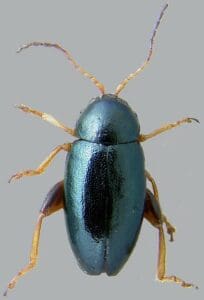
Leafy spurge beetles (Aphthona spp.)
Adult leafy spurge beetles (Aphthona spp.) feed on spurge leaves and flowers limiting the plant’s ability to photosynthesize. Females lay eggs in the soil and their larvae feed on spurge roots stunting stem growth and reducing root function. Five different species of Aphthona beetles have been released to control leafy spurge in Canada since the 1980s. Of these five species, the biocontrol release program primarily distributes the black dot leafy spurge beetle (A. nigriscutis) and the brown-legged leafy spurge beetle (A. lacertosa) as they have been the most effective at establishing at new sites and controlling leafy spurge in Alberta. Aphthona beetles used to control leafy spurge are flea beetles and, although similar in appearance to flea beetles that are crop and garden pests, they are different species that only feed on leafy spurge.
DALMATION TOADFLAX - 'Linaria dalmatica'
Dalmatian toadflax (Linaria dalmatica) is an herbaceous perennial that commonly invades disturbed areas and sites with coarse textured soils. It reproduces through both creeping roots and seed that can remain viable in the soil for up to 10 years. In Alberta Dalmatian toadflax is classified as a noxious weed.
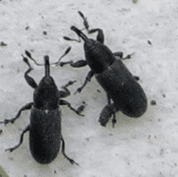
Dalmatian toadflax Stem-Mining Weevil (Mecinus janthiniformis)
The stem weevil Mecinus janthiniformis is a biocontrol agent for dalmatian toadflax. Adult weevils feed on toadflax leaves causing a distinct ‘shot hole’ pattern the upper leaves that stunts plant growth and suppresses flowering. Female weevils lay eggs in toadflax stems and larvae mine out the tissue inside the stem causing desiccation and die off. Larvae pupate and overwinter inside the toadflax stem as adults and emerge in the spring as dalmatian toadflax plants are first sprouting.
SPOTTED AND DIFFUSE KNAPWEED (Centaurea maculosa and C. diffusa)
Both spotted knapweed (Centaurea stoebe) and diffuse knapweed (Centaurea diffusa) are prohibited noxious weeds in Alberta that invade disturbed sites before moving to surrounding habitats. Both plants reproduce by seed which can remain viable in soil for many years. Diffuse knapweed distributes seed by forming tumbleweeds while spotted knapweed relies on wind, water, livestock, and human activity. Spotted and diffuse knapweed can produce a hybrid knapweed that possesses a range of characteristics from both parent species.
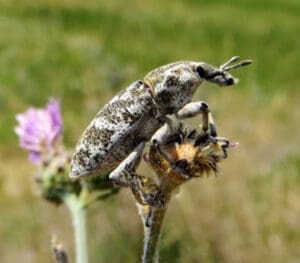
Knapweed root weevil (Cyphocleonus achates) and knapweed seed-head weevil (Larinus minutus)
The biocontrol release program provides two separate species which can be released in tandem on both spotted and diffuse knapweed. The first is a seed-head weevil (Larinus minutus) that lays eggs in knapweed flower heads. Larvae from this species eat all the seeds within one flower reducing knapweed seed output. After four weeks, larvae pupate inside the seed-head before emerging as adults. Adults chew out of the top of the seed-head creating a distinct hole and chamber where the weevil pupated. Adult L. minutus feed on knapweed leaves causing stunted growth and at high densities can cause the plant to die. The second knapweed biocontrol agent is a root weevil (Cyphocleonus achates) that lays eggs on the root crown. Larvae from this weevil tunnel through the knapweed’s tap root stunting plant growth and exposing the plant to bacterial and fungal infection. Because L.minutus and C. achates attack different parts of the knapweed they do not compete with one another and can be used together at a knapweed infestation to maximize control.
RUSSIAN KNAPWEED - 'Rhaponticum repens'
Russian knapweed (Rhaponticum repens) is a perennial rangeland weed that forms dense infestations outcompeting other plants. This knapweed produces seed but spreads primarily through creeping horizontal roots with a distinctly dark brown or black colour. Horses consuming large quantities of R. repens can develop a fatal neurological disease called “chewing disorder”. In Alberta, Russian knapweed is classified as a prohibited noxious weed.

Russian knapweed Gall Wasp (Aulacidea acroptilonica)
The gall wasp Aulacidea acroptilonica is a biocontrol agent that lays eggs in the stem of Russian knapweed. The larvae emerging from the eggs feed inside the stem creating a tumor-like growth called a gall. These galls draw nutrients away from the plant limiting plant growth and reducing its ability to produce flowers and seed. Larvae overwinter in galls and pupate early spring before emerging as adults ready to lay eggs as soon as Russian knapweed rosettes are up. Adult A. acroptilonica wasps do not have stings and cannot harm humans.
The AISC has secured funding from the Saskatchewan Agriculture Development Fund to work with Agriculture and Agri-Food Canada and CABI Switzerland to research a biocontrol agent for common tansy.
COMMON TANSY - 'Tanacetum vulgare'
Common Tansy (Tanacetum vulgare) is a perennial forb that produces a pungent scent and contains alkaloids that are unpalatable to cattle and horses. The plant reproduces through creeping roots as well as through seeds. Common tansy grows well in many different habitats. In Alberta common tansy is classified as a noxious weed and is a common sight along roadsides, pastures, hayfields and open natural areas where the weed has spread, significantly reducing fodder production.
This project/initiative was funded in part by the Canadian Agricultural Partnership, a five-year federal-provincial-territorial initiative.
BIOCONTROL AGENTS from Strategic Weed Management Consulting
SCENTLESS CHAMOMILE - 'Trileurospermum inodorum'
Scentless chamomile (Tripleurospermum inodorum) can behave as an annual, biennial, or perennial weed. It reproduces by seed only but can be very difficult to eradicate in crop situations. The plant typically invades disturbed sites and is transported to new sites by seeds that float or through contaminated weed seed and livestock forage. In Alberta, scentless chamomile is classified as a noxious weed.

Scentless Chamomile Seed-Head Weevil (Omphalapion hookerorum)
The seed-head weevil Omphalapion hookerorum is a biocontrol agent that lays eggs in the flower bud of scentless chamomile. The larvae hatch from eggs in the flower bud and feed inside the flowerhead, destroying the scentless chamomile seeds as they develop. Larvae pupate and emerge as adults from the ripe seed heads in late summer, feeding on the foliage before overwintering in the soil or litter.
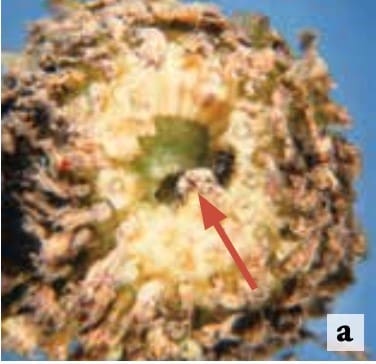

Reference: Field guide for the biological control of weeds in the northwest. 2014. Winston R., Randall C.B., De Clerck-Floate R., McClay A., Andreas J., and Schwarzlander M. USDA, Available from: https://www.fs.fed.us/foresthealth/publications/index.shtml
All photos by Karma Tiberg, courtesy of AAFC, not for re-publication or any other use without express consent of AAFC

